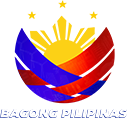TRES DE ABRIL REVOLT
3 April 1898
Cebu City

On April 3, 1898, one hundred seventy-nine Cebuano Katipuneros rose up in revolt in Cebu City. The revolutionaries, dressed in sacred and mystic amulets to ward off bullets and wounds, attacked the Spanish with such ferocity that both soldiers and civilians ran to the refuge of Fort San Pedro. The dramatic Tres de Abril uprising liberated Cebu City from more than 300 years of continuous foreign rule.
Leon Kilat
The leader of the Cebuano uprising was a native son of Bacong, Negros Oriental named Pantaleon Villegas. He worked in various shops in Cebu before jhe joined a trip to Manila where he became a member of the underground Katipunan organization. In keeping with the tradition of the society, he adopted the nom-de-guerre “Leon Kilat” which means “Lightning Lion” in Cebuano.
Bloody Palm Sunday
The katipunan chapter in Cebu originally wanted to rise up in revolt on Good Friday, 8 April 1898 but were persuaded to instead begin the uprising on Palm Sunday. Armed mostly with bolos, they relied on their speed and ferocity to overwhelm and surprise the enemy. Over the course of April 3, their rapid action forced Spanish civilians, priests, and soldiers to seek refuge in the Fort. Only the offshore bombardment from the gunboat Maria Cristina stopped them from their pursuit.
They remained in the city from 3 to 7 April when a large army column and the cruiser Don Juan de Austria reinforced the besieged Spanish forces in the fort. Seeing the overwhelming force that faced them, Kilat ordered a retreat into the mountains north of Cebu City. Unfortunately, Kilat was assasinated by his aides-de-camp Florencio Noel and Apolinario Alcuitas while seeking refuge in Carcar, supposedly due to the danger that his continued presence brought to the town.
